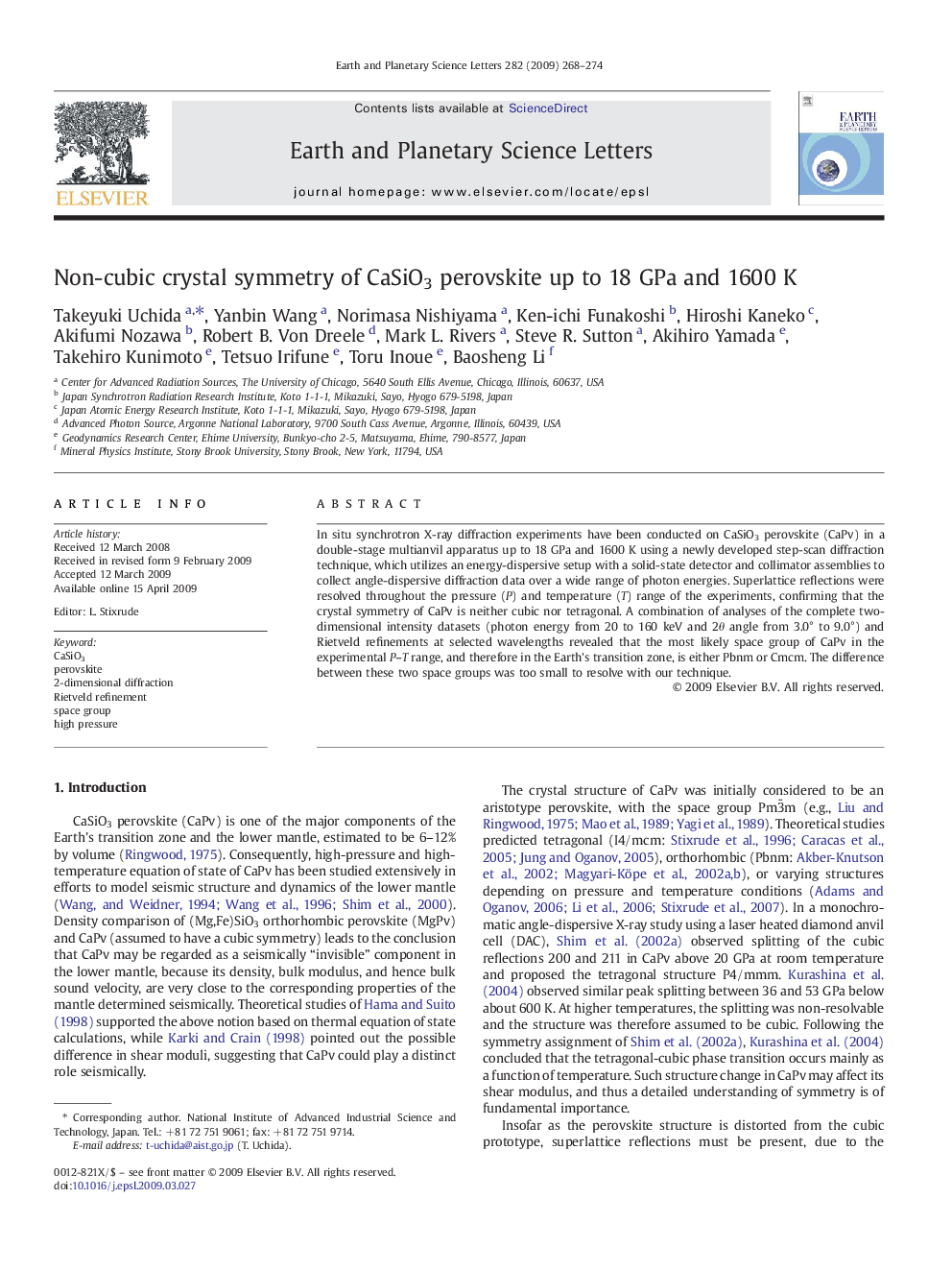| Article ID | Journal | Published Year | Pages | File Type |
|---|---|---|---|---|
| 4679102 | Earth and Planetary Science Letters | 2009 | 7 Pages |
Abstract
In situ synchrotron X-ray diffraction experiments have been conducted on CaSiO3 perovskite (CaPv) in a double-stage multianvil apparatus up to 18 GPa and 1600 K using a newly developed step-scan diffraction technique, which utilizes an energy-dispersive setup with a solid-state detector and collimator assemblies to collect angle-dispersive diffraction data over a wide range of photon energies. Superlattice reflections were resolved throughout the pressure (P) and temperature (T) range of the experiments, confirming that the crystal symmetry of CaPv is neither cubic nor tetragonal. A combination of analyses of the complete two-dimensional intensity datasets (photon energy from 20 to 160 keV and 2θ angle from 3.0° to 9.0°) and Rietveld refinements at selected wavelengths revealed that the most likely space group of CaPv in the experimental P-T range, and therefore in the Earth's transition zone, is either Pbnm or Cmcm. The difference between these two space groups was too small to resolve with our technique.
Related Topics
Physical Sciences and Engineering
Earth and Planetary Sciences
Earth and Planetary Sciences (General)
Authors
Takeyuki Uchida, Yanbin Wang, Norimasa Nishiyama, Ken-ichi Funakoshi, Hiroshi Kaneko, Akifumi Nozawa, Robert B. Von Dreele, Mark L. Rivers, Steve R. Sutton, Akihiro Yamada, Takehiro Kunimoto, Tetsuo Irifune, Toru Inoue, Baosheng Li,
